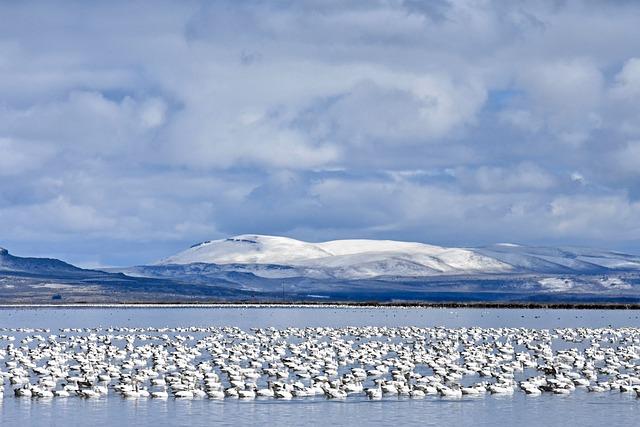Exploring Immigration Trends: Pakistan’s Shifting Landscape
In a world where borders are constantly redrawn, and the quest for opportunity leads many to new horizons, Pakistan stands at a significant crossroads in its immigration narrative. Historically a land of both emigration and immigration, the patterns of movement in and out of Pakistan have evolved in response to shifting socio-political dynamics, economic fluctuations, and global crises. Today, as the country grapples with its internal challenges and external aspirations, the landscape of immigration is undergoing a profound transformation. This article delves into the intricate tapestry of immigration trends in Pakistan, illuminating the factors driving these changes, the diverse stories of its migrants, and the implications for both the nation and the world at large. Join us as we explore the evolving dialogues of identity, aspiration, and belonging within this vibrant context, revealing how Pakistan’s shifting landscape mirrors the broader complexities of global migration in the 21st century.
Understanding the Historical Context of Immigration Patterns in Pakistan
The historical context of immigration in Pakistan reveals a complex tapestry woven from various socio-political and economic threads. Over the decades, a multitude of factors have influenced migration patterns, including partition, regional conflicts, and global economic shifts. The most significant influxes can be traced back to the 1947 Partition, which prompted millions to move across borders, seeking safety and security. Subsequently, the Afghan crisis in the late 1970s and early 1980s led to a significant number of Afghan refugees seeking refuge within Pakistan’s borders. These movements formed the backbone of Pakistan’s demographic landscape, enriching its cultural diversity while also straining resources and infrastructure.
Moreover, the modern era has been marked by economic opportunities and political instability, prompting varied waves of migration. Many Pakistanis have sought better prospects abroad, contributing significantly to the global diaspora. The Gulf States, for instance, became a key destination for labor migration in the 1980s, driven by regional economic growth. Today, various pull factors such as education, employment, and a quest for safety are at play. The following table illustrates some pivotal migration waves and their impacts on the socio-economic fabric of the country:
| Year | Migration Type | Impact |
|---|---|---|
| 1947 | Partition Refugees | Demographic Changes, Cultural Reconfiguration |
| 1980s | Afghan Refugees | Resource Strain, Economic Impact |
| 1990s – Present | International Migrants | Remittance Growth, Global Diaspora Expansion |

Analyzing Current Statistics and Demographics of Pakistani Migrants
As we delve into the demographics of Pakistani migrants, it’s essential to recognize the tapestry of cultures and experiences woven into their stories. Currently, over 8 million Pakistanis reside outside their homeland, primarily in countries such as the United States, United Kingdom, Saudi Arabia, and UAE. This migration is not solely for economic reasons; many seek opportunities for education, safety, and a better quality of life. The youthful demographic of Pakistan plays a crucial role, with a median age of around 22 years, which drives the workforce migration trend.
The economic contributions of the Pakistani diaspora are significant, with remittances reaching approximately $29 billion annually. This financial support is vital for the local economy, bolstering households and enabling local businesses to thrive. Notable statistics include:
- 60% of migrants are under the age of 35.
- Approximately 10% of the migrant population are highly skilled professionals.
- 75% of Pakistani migrants live in urban areas of their host countries.
| Country | Estimated Pakistani Migrants | Percentage of Total Migrants |
|---|---|---|
| United States | 1.2 million | 15% |
| Saudi Arabia | 2.5 million | 31% |
| United Kingdom | 1.5 million | 18% |
| UAE | 1.6 million | 20% |
| Other Countries | 1.2 million | 16% |

Identifying Key Factors Driving Recent Shifts in Migration Trends
The landscape of migration from Pakistan is undergoing substantial transformation, driven by a confluence of global and local factors. As the nation navigates its economic and socio-political complexities, the following elements prominently influence recent migration trends:
- Economic Opportunities: Opportunities in countries like the UAE and Saudi Arabia remain significant, drawing skilled and unskilled workers seeking better livelihoods.
- Political Stability: The quest for political security and stability has compelled many individuals to seek refuge or opportunities abroad, particularly in the West.
- Education: Increasing numbers of students are pursuing higher education in Western countries, attracted by superior educational frameworks and the promise of a more prosperous future.
- Family Reunification: Established immigrant communities are a crucial draw, with individuals looking to join family members already residing abroad.
A closer examination of statistics elucidates the scale of these trends, revealing a shift towards destinations previously less frequented by Pakistani migrants. The table below summarizes key destination countries and their respective migrant populations:
| Country | Migrant Population | Primary Reason for Migration |
|---|---|---|
| United Arab Emirates | 1.9 million | Job Opportunities |
| Saudi Arabia | 1.5 million | Employment |
| United Kingdom | 1.2 million | Education & Family |
| Canada | 500,000 | Skilled Migration |

Proposing Policy Recommendations for Sustainable Immigration Management in Pakistan
To address the challenges of immigration effectively, a multi-faceted policy framework is essential. This framework should prioritize the integration of immigrants while ensuring the protection of local communities. Key recommendations include:
- Establishing an Immigration Task Force: Comprising government officials, community leaders, and immigration experts to provide regular insights and updates.
- Augmenting Legal Pathways: Creating more opportunities for skilled migrants, recognizing professional qualifications from abroad, and streamlining the visa application process.
- Enhancing Public Awareness Programs: Informing citizens about the benefits of immigration and successful integration stories to promote inclusivity.
- Fostering Collaboration with NGOs: Partnering with non-government organizations that specialize in refugee and migrant support services ensures resources are utilized effectively and reaches those in most need.
Furthermore, it’s crucial to establish data-driven monitoring systems that track immigration trends and quantify their economic impact. Recommended strategies include:
- Implementing Regular Surveys: To assess the needs and challenges faced by both immigrants and host communities, ensuring policies are responsive and adaptive.
- Developing a Centralized Database: For storing data related to immigration patterns, employment rates, and social integration metrics, facilitating informed policy-making.
- Conducting Impact Assessments: To evaluate the effectiveness of implemented policies and make necessary adjustments based on findings.
| Policy Area | Recommendations | Expected Outcome |
|---|---|---|
| Integration | Community outreach and skills training | Improved social cohesion and economic contribution |
| Legal Framework | Streamlined immigration processes | Enhanced compliance and reduced illegal immigration |
| Public Perception | Awareness campaigns | Increased community support for immigration policies |
In Conclusion
In the ever-evolving narrative of global migration, Pakistan stands at a unique crossroads, where personal aspirations collide with socio-political realities. The shifting trends of immigration reflect not only individual journeys but also the broader currents of globalization, economic opportunity, and demographic change. As we close this exploration of Pakistan’s immigration landscape, it’s clear that the stories behind the statistics are rich with complexity—an intricate tapestry woven with the threads of hope, resilience, and ambition.
Understanding these trends is not merely an academic exercise; it invites us to consider the human experience behind the numbers. It challenges us to empathize with those seeking better lives, while also acknowledging the enduring ties that bind communities across borders. As Pakistan continues to navigate this dynamic terrain, its immigration trends will undoubtedly evolve, revealing new layers of identity, culture, and belonging.
Ultimately, the journey through these shifting tides serves as a reminder that in a world increasingly defined by migration, the pursuit of a brighter future is a universal quest—a quest that connects us all, regardless of origin or destination. As we look ahead, may we continue to engage with these narratives, fostering understanding and solidarity in a world that is more interconnected than ever.



